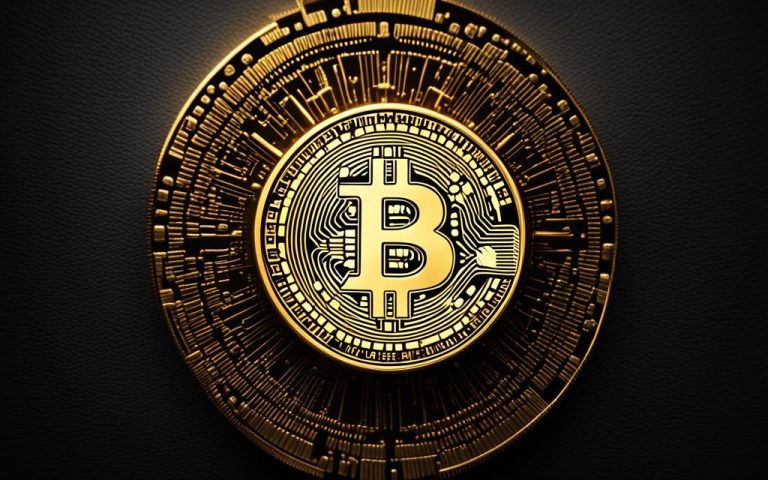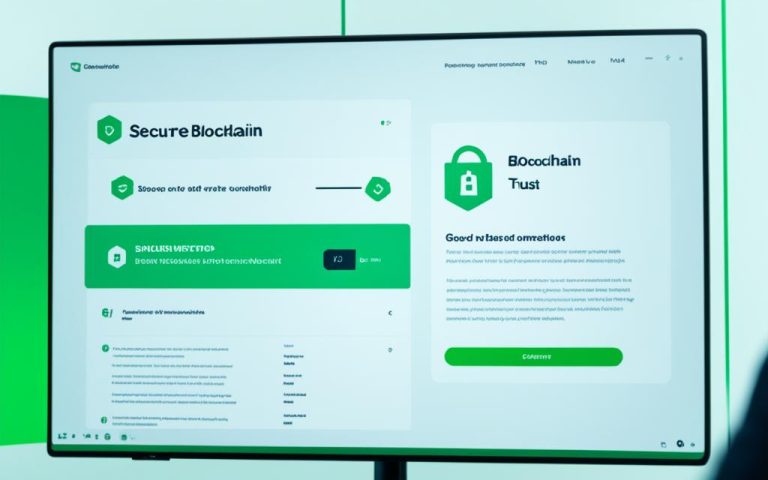In blockchain, a nonce is a unique number used once in mining. It’s a 32-bit number that helps miners create a valid hash. This hash is for a new block being added to the chain.
The main role of a nonce is to keep digital transactions safe. It uses a special code to add extra security. This makes it tough for hackers to mess with the data. Because of this, blockchain is trusted for many uses.
Let’s dive deeper into why a nonce is key for safety in blockchain. Read on to learn about its importance and how it’s used.
How Does a Nonce Ensure Security in Blockchain?
Nonces are key to keeping blockchain networks safe and sound. They’re used in mining to make a valid hash for a new block. This hash is like the block’s unique ID.
Changing anything in the block also changes its hash. So, once a block joins the blockchain, it’s fixed. This keeps the blockchain data safe from tampering.
Miners play around with the nonce to find a solution that fits the network’s rules. They try different nonces to create many hash values. They aim to find one that meets the required difficulty level.
“The nonce is manipulated to change the block header hash, contributing to finding valid hashes.”
The difficulty level makes sure each block’s hash starts with some zeros. It’s tweaked regularly to keep block creation steady. This keeps the network secure from anyone trying to cheat the system.
Nonces are either random or semi-random, created by miners making a new block. It’s hard to guess the right nonce for a valid hash because there’s no pattern.
Nonce-related attacks and preventive measures
Nonce attacks are a big risk for blockchain security. These include reusing, predicting, brute-forcing nonces, and Sybil attacks. There are steps taken to stop these threats:
- Every block gets a unique nonce, so there’s no nonce reuse. This keeps the blockchain secure.
- There are clever ways to make sure nonces are random and hard to predict.
- To stop brute force attacks, the puzzles miners solve are made harder.
- There are systems to find and stop bad nodes in the network.
These actions help keep blockchain networks safe and the data real and reliable.
For more on blockchain nonces, check out these resources:
- Investopedia has a great article on what a nonce is in blockchain.
- GeeksforGeeks goes deep into the concept of nonce in blockchain.
- Check Intellipaat’s blog for insights on nonces in blockchain and why they matter.
Applications and Examples of Nonces in Blockchain
Nonces serve many roles in blockchain tech and other areas. They stop replay attacks, keeping old messages from being reused by wrongdoers. In HTTP digest access authentication, nonces ensure each response code is authentic. This keeps online shopping safe.
Digital signatures also depend on nonces to prove messages and documents are real. These help block fake activities in blockchain transactions. Nonces are key in data encryption too. They make encrypted text diverse, shielding sensitive info. For a deep dive on nonces, check this explanation.
The “golden nonce” is a big deal in mining. It’s a special nonce that makes a block’s hash fall below the target, showing a miner’s success. The finder of the golden nonce can add blocks to the chain and wins the mining round. Nonces help in giving out rewards and keep the crypto world secure. For more, read this article.
FAQ
What is a nonce in blockchain?
A nonce in blockchain is a unique number used once in mining. It’s a 32-bit number miners use to make a valid hash. This hash helps add new blocks to the blockchain.
How does a nonce ensure security in blockchain?
When a block gets mined, its hash acts like a fingerprint. Any change, even in the nonce, changes this hash. This keeps the blockchain secure. Changing data would need altering all following blocks, which is nearly impossible.
What are some applications and examples of nonces in blockchain?
Nonces stop replay attacks by ensuring messages can’t be reused by hackers. They’re crucial in authentication, protecting messages from interception. Nonces are also key in digital signatures, identity checks like SSO and 2FA, and encrypting data. The “golden nonce” indicates a successful mining effort, allowing a new block’s addition.



















